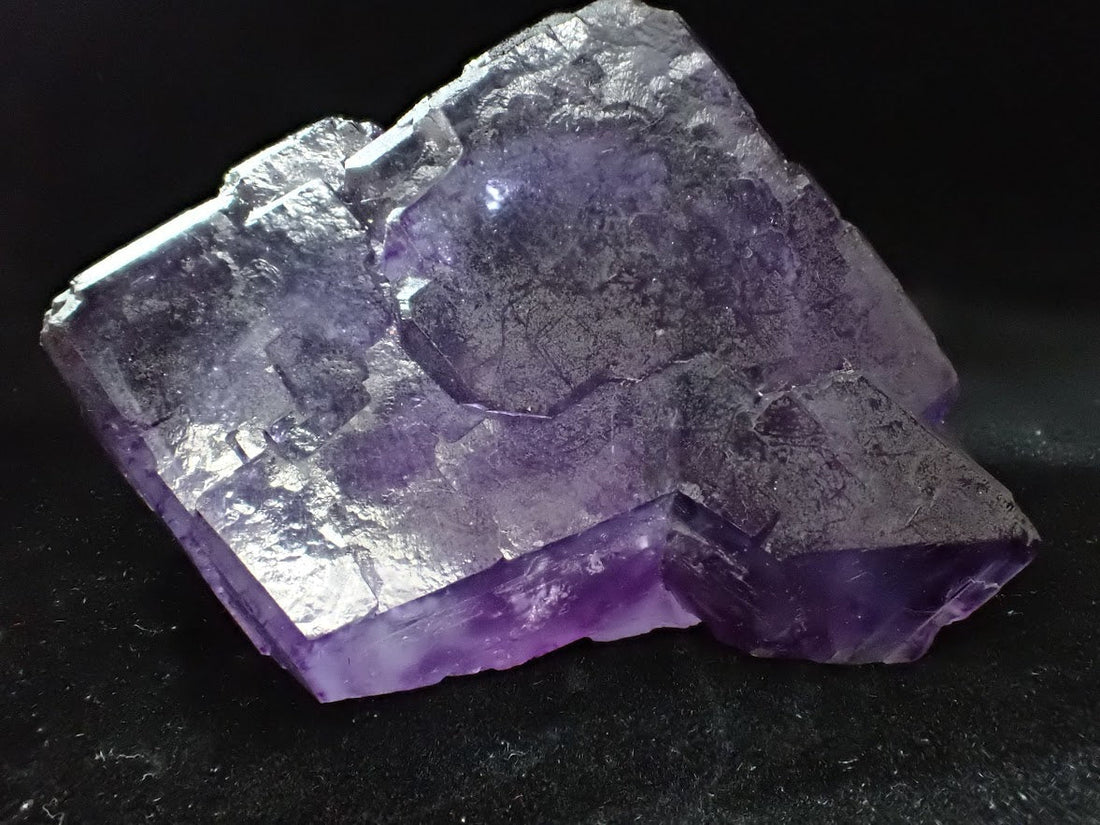
The Most Sought-After Fluorite Localities in the World
Share
Fluorite is one of the most visually diverse minerals in the world — and where it’s from can be just as important as how it looks. Some localities produce sharp, zoned cubes with intense color. Others are known for rare colors, optical effects, or iconic associations. Here are the fluorite mines that serious collectors and mineral lovers consider legendary.
1. Yaogangxian Mine (YGX), Hunan, China
Often called the “crown jewel” of modern Chinese mineral localities, Yaogangxian is famous for its deep purple fluorite cubes — often perched on quartz, stibnite, or pyrite. Many specimens show zoning, phantoms, or even fluorite atop pyrite blades.
Why collectors love it: Razor-sharp geometry, contrast, and highly aesthetic matrix combinations.
2. Xuanhalong (XHL) Mine, China
This newer discovery produces stunning blue and deep purple fluorite — frequently in layered steps, window growth, or large transparent cubes. Color zoning and internal clarity make Xuanhalong pieces incredibly photogenic and highly collectible.
Why it matters: XHL material has quickly become iconic and is no longer as available as it once was.
3. Huanggangliang Mine (Blueberry Fluorite), China
Known for its unique color and frosted appearance, this fluorite is often dubbed “blueberry” due to its saturated blue-violet tone and matte surface. Huanggangliang specimens show tight cubes with some degree of internal zoning or phantom layers.
Fun fact: The mine is now closed, increasing scarcity and value for serious collectors.
4. Rogerley Mine, England
Possibly the most famous locality in the UK, Rogerley fluorite is beloved for its rich green daylight fluorescence and sharp, cubic habit. Under UV light, it glows electric blue. Some pieces also show “color shift” in different lighting.
Why it's iconic: Rogerley fluorite has been carefully mined by mineral enthusiasts, making specimens high quality and ethically sourced.
5. Cave-in-Rock, Illinois, USA
This classic American locality produced incredible purple and yellow fluorite for decades. Known for massive cubes, complex zoning, and strong saturation, Cave-in-Rock material is now highly collectible as much of the area is no longer active.
Look for: Deep zoning, stacked cube formations, and purple-yellow contrast.
6. Asturias Region, Spain
Spanish fluorite is typically found in vibrant purples and blues, often with transparent cubes and stepped faces. Localities like La Viesca and Berbes are particularly sought-after.
Standout features: Superb clarity, color zoning, and fine crystal faces on matrix.
7. Okorusu Mine, Namibia
Okorusu fluorite is famous for dramatic zoning in purple, green, yellow, and blue. Many pieces show intense concentric growth or vivid rainbow contrast. Though the mine has slowed production, the material is globally recognized.
Why collectors love it: Exceptional color combinations and sharp crystallization in large pieces.
What Makes a Locality Valuable?
- 🔍 Unique color: Some mines produce fluorite in shades or zoning patterns found nowhere else
- 📍 Limited access: Closed or restricted mines make older material more collectible
- 💎 Crystal habit: Localities known for sharp faces, internal phantoms, or window growth are prized
- 🧭 Ethical mining: Regions with documented and respectful extraction add to long-term value
Legacy’s Focus on Premium Fluorite
At Legacy Crystals and Minerals, we specialize in fluorite from iconic and emerging localities — with a focus on natural material, clear provenance, and collector-grade aesthetics. We offer hand-selected pieces from XHL, Huanggangliang, Yaogangxian, and other highly regarded sources.
Final Thoughts: It’s About More Than Color
Color may draw you in — but a fluorite’s locality tells the deeper story. From England’s glowing greens to China’s frosted blues, the origin of a crystal adds history, science, and value to every piece.
Collect with clarity — and know where your fluorite came from.



